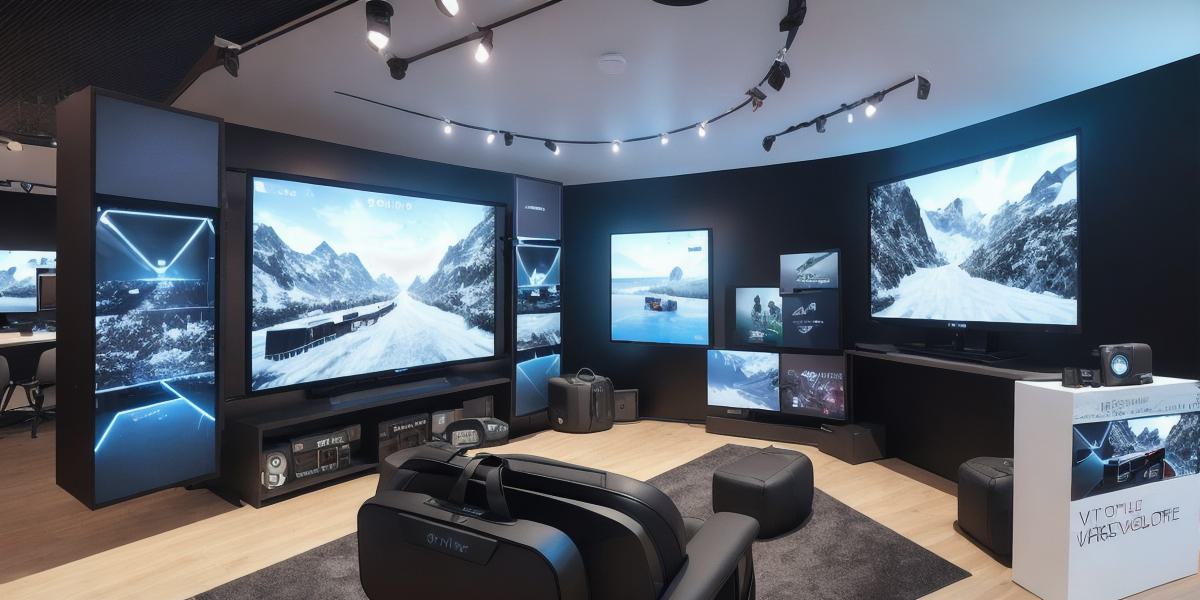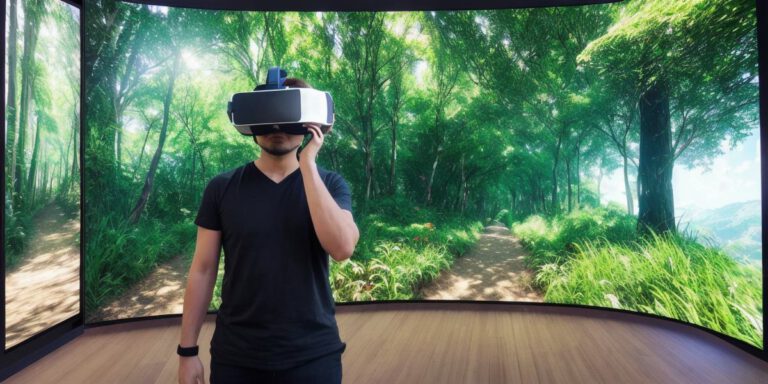The Pros and Cons of Virtual Reality: A Comprehensive Analysis for Developers

Introduction:
Virtual reality (VR) technology has been rapidly evolving over the past few years, and it’s not hard to see why. The immersive experiences that VR can offer are truly revolutionary, providing users with an opportunity to step into a whole new world and explore its wonders. However, as with any technology, there are both benefits and risks associated with virtual reality. In this article, we will examine the pros and cons of VR and explore their implications for society.
The Benefits of Virtual Reality:
- Improved Learning: One of the most significant advantages of VR is its ability to facilitate immersive learning experiences. By placing users in a virtual environment, developers can provide them with realistic simulations that allow them to practice and master new skills in a safe and controlled manner. For example, medical students can use VR to simulate surgeries, while pilots can use it to practice flying without risking their lives or the lives of others.
- Enhanced Creativity: Another benefit of VR is its ability to stimulate creativity. By providing users with a virtual canvas to work on, developers can encourage them to explore new ideas and possibilities that they may not have considered otherwise. This has already been seen in fields such as architecture, where VR can be used to create 3D models of buildings and test different design concepts before constructing them in the real world.
- Increased Accessibility: Finally, VR technology has the potential to make certain experiences more accessible to people who may not have had access to them otherwise. For example, individuals with mobility impairments can use VR to experience activities that they may not be able to do in person, such as hiking or skiing. Similarly, people living in remote areas can use VR to explore new cultures and experiences without having to travel long distances.
The Risks of Virtual Reality:
- Motion Sickness: While many people find VR experiences to be exciting and immersive, some may also experience motion sickness. This is particularly true for individuals who are prone to motion sickness in the first place or who spend extended periods in virtual environments.
- Addiction: There have been concerns that VR technology could be addictive, leading users to spend excessive amounts of time in virtual worlds at the expense of their real-world responsibilities. While it’s too early to say whether this will become a significant issue, it’s important for developers to be mindful of the potential for addiction when designing VR experiences.
- Privacy Concerns: Finally, there are privacy concerns associated with VR technology. For example, if users are spending extended periods in virtual environments, they may be vulnerable to surveillance or data breaches. Developers must ensure that they are using secure protocols and taking appropriate measures to protect user data.

The Future of Virtual Reality:
As VR technology continues to evolve, it’s likely that we will see even more innovative uses for it in the future. For example, virtual reality could be used to create more realistic and immersive experiences for online shopping, gaming, and education. It could also be used to facilitate remote collaboration and communication between teams working on complex projects.
Summary:
In conclusion, virtual reality technology has the potential to bring about significant benefits for society, but it’s important that we remain mindful of the risks associated with it as well. As developers, it’s up to us to ensure that we are using VR technology in a responsible and ethical manner, taking into account the needs of our users and the impact that our creations may have on the world around us. By doing so, we can help to ensure that virtual reality remains a force for good in the years to come.
FAQs:
- What are some potential risks associated with VR technology?
Motion sickness, addiction, and privacy concerns are some of the potential risks associated with VR technology. - How can developers ensure that they are using VR technology in a responsible and ethical manner?
Developers should consider the needs of their users and the impact that their creations may have on the world around them. They should also take appropriate measures to protect user data and avoid creating addictive experiences. - What are some potential applications for VR technology in the future?
Virtual reality could be used to create more realistic and immersive experiences for online shopping, gaming, and education. It could also be used to facilitate remote collaboration and communication between teams working on complex projects.








